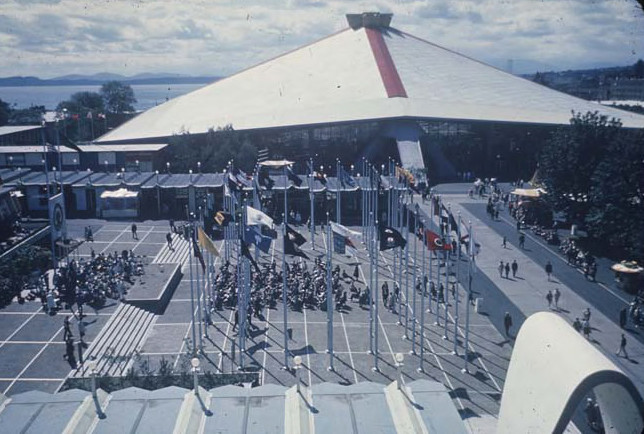
The city of Seattle has recently asked for bids for the redevelopment of the KeyArena at the Seattle Center, which would create potential for NHL and NBA use. Along with the redevelopment option, there is mention for bidders to also submit plans for a full demolition and rebuild option if the arena avoids a historical preservation status; this status won’t be known until the second quarter of 2017. The plans to alter or demolish the arena create an important opportunity to highlight this historic piece of architecture, as well as Paul Thiry; the reknowned Architect that not only built the structure that eventually became known as the KeyArena, but who also first introduced European Modernism to Seattle in the 1930’s.
Paul Thiry graduated from the University of Washington in 1928, after originally enrolling to study medicine. At the beginning of his career, Thiry focused on residential projects. However, following a trip around the world in the early 1930’s, Thiry was exposed to European Modernism and was introduced to Le Corbusier and Antonin Raymond. This impacted Thiry’s work substantially and he returned to Seattle to build what resulted in the most modern pieces of architecture in the state of Washington. These modern structures resulted in a dramatic advancement in Northwest Architecture during this time.

Docomomo WEWA states, “Greater local recognition of Paul Thiry’s design came with his work for the Seattle World’s Fair. In 1958, while the plans for this Exposition were in a seminal stage, he was appointed as its primary planner and architect. The Century 21 Exposition Grounds/Seattle Center represents Thiry’s Modern concepts of city planning and architectural design, primarily through site planning and his design of both temporary and permanent structures. At the fair Thiry designed the First National Bank Pavilion, State of Washington Theme Building, the Nalley Theater and Exhibition Building, and the Seattle Center Coliseum,(now known as KeyArena)… Both the Chamber of Commerce and the City Council honored him as “Man of the Year” in 1962. Likewise, he was elected to the AIA’s College of Fellows that same year. ”
One of the key features of the Arena is its hyperbolic roofline, and renovations completed in 1994 and 1995 took great care to minimize the impact on the roofline. Next time you find yourself at the KeyArena, take a bit of time to admire the shape and sculpture of Thiry’s original design and appreciate the significant work of the father of Seattle Modernism.
